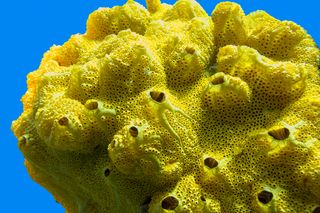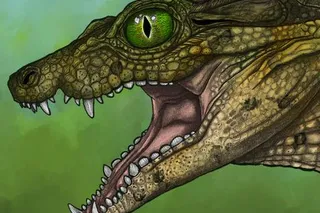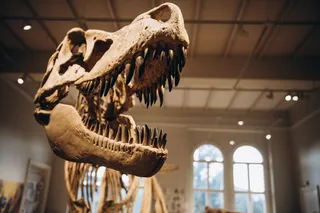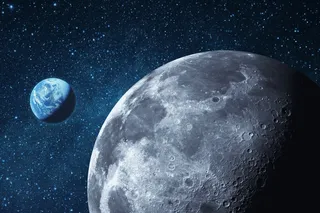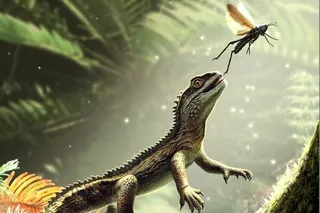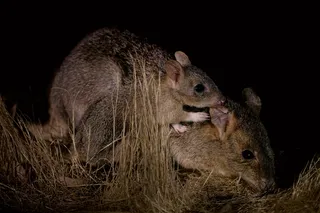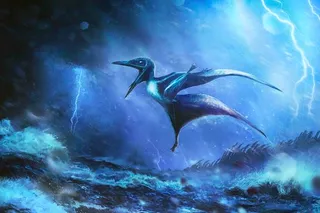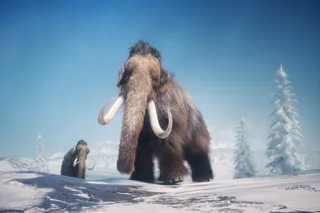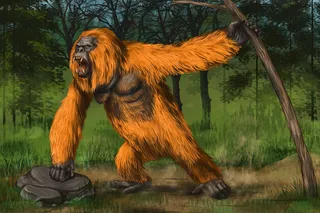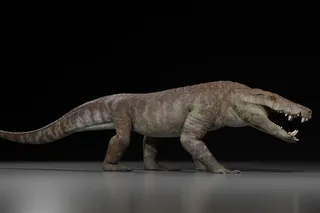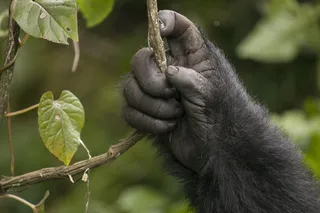When thinking about the ancient animals of Earth, you likely picture fish, birds, and dinosaurs. But a new study published in the Proceedings of the National Academy of Sciences suggests that the first animal on Earth was something unexpected: a 541-million-year-old sea sponge.
Thanks to the discovery of “chemical fossils,” scientists now have evidence that sea sponges are one of the oldest animals to ever exist on Earth. More specifically, these organisms belong to a class of sea sponges known as demosponges, a group that is still alive today and whose genetics helped identify their archaic ancestors.
“We don’t know exactly what these organisms would have looked like back then, but they absolutely would have lived in the ocean, they would have been soft-bodied, and we presume they didn’t have a silica skeleton,” said Roger Summons, professor at MIT’s Department of Earth, Atmospheric and Planetary Sciences, in a press release.
Read More: Sponges Sneeze To Clear Out Filters
What Is a Chemical Fossil?
Chemical fossils are biomolecules left by a living organism that are then buried, transformed, and preserved in sediment. Chemical fossils found in ancient rocks are what helped scientists discover the existence of these sea sponge ancestors.
The chemical fossils identified by this study are known as steranes, the geologically stable form of sterols, like cholesterol. Sea sponges produce two specific types of steranes, 30-carbon and 31-carbon. Researchers were able to find an abundance of the especially rare 31-carbon steranes in rock samples from Oman, western India, and Siberia. This finding led them to believe that what they were looking at was evidence of sea sponges being present over 541 million years ago during the Ediacaran Period.
“These special steranes were there all along. It took asking the right questions to seek them out and to really understand their meaning and from where they came,” said Lubna Shawar, a research scientist from Caltech, in the press release.
Sea Sponges: One of Earth’s First Animals
The research team first discovered evidence of these ancient sea sponges in 2009. At this time, preserved 30-carbon sterols were found in rocks collected from an outcrop in Oman. As mentioned, 30-carbon sterols are a unique type that modern-day sea sponges still produce.
After identifying these compounds, scientists were certain that the presence of these sterols pointed to sea sponges being one of the first examples of multicellular life on Earth. However, other scientists contested this claim and believed that 30-carbon sterols could have been left by something else, such as other organisms or nonliving geological processes.
But with the new discovery of 31-carbon sterols, the original hypothesis has only become stronger. Researchers suggest that 31-carbon and its creation are unique to ancient and modern sea sponges, and that its presence in the Precambrian rocks is biological rather than geological.
“It’s a combination of what’s in the rock, what’s in the sponge, and what you can make in a chemistry laboratory,” said Summons in the press release. “You’ve got three supportive, mutually agreeing lines of evidence, pointing to these sponges being among the earliest animals on Earth.”
Future research plans include searching for 30- and 31-carbon sterols in rocks from other locations around the world. With more samples, scientists will be able to learn more about the exact dates when these ancient sea sponges first took shape.
Read More: Palm-Sized Sea Creature Named the World's Oldest Animal
Article Sources
Our writers at Discovermagazine.com use peer-reviewed studies and high-quality sources for our articles, and our editors review for scientific accuracy and editorial standards. Review the sources used below for this article:
- Proceedings of the National Academy of Sciences. Chemical characterization of C31 sterols from sponges and Neoproterozoic fossil sterane counterparts



